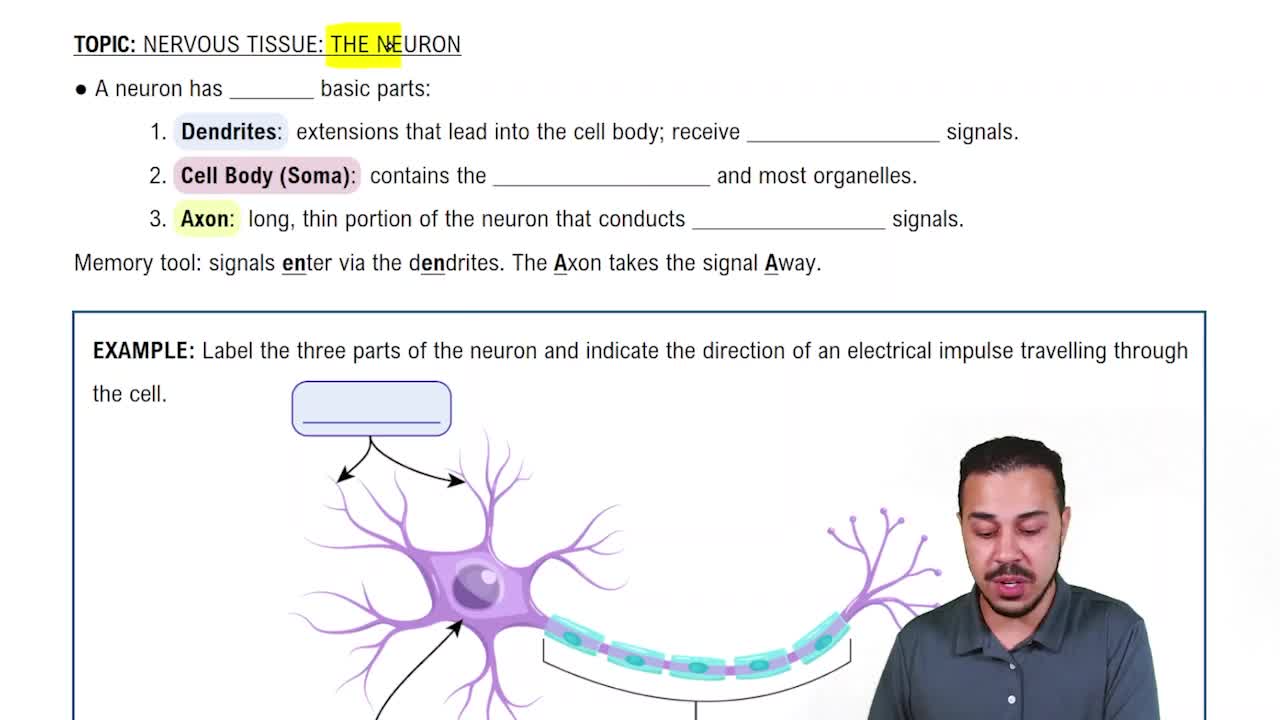Here are the essential concepts you must grasp in order to answer the question correctly.
Neurotransmitters
Neurotransmitters are chemical messengers that transmit signals across synapses from one neuron to another. They play a crucial role in communication within the nervous system, influencing various physiological functions and behaviors. Different neurotransmitters have specific roles, such as excitatory or inhibitory effects on target cells.
Recommended video:
Neurotransmitter Receptors
Somatic Motor Neurons
Somatic motor neurons are responsible for transmitting signals from the central nervous system to skeletal muscles, facilitating voluntary movement. These neurons release neurotransmitters at the neuromuscular junction, where they interact with muscle fibers to initiate contraction. Understanding their function is essential for grasping how motor control is achieved.
Recommended video:
Acetylcholine
Acetylcholine is a key neurotransmitter in the peripheral nervous system, particularly at the neuromuscular junction. It is released by somatic motor neurons and binds to receptors on muscle cells, leading to muscle contraction. Its role is critical in both voluntary and involuntary muscle movements, making it a fundamental concept in neuromuscular physiology.
Recommended video:
A. Events at the Neuromuscular Junction




